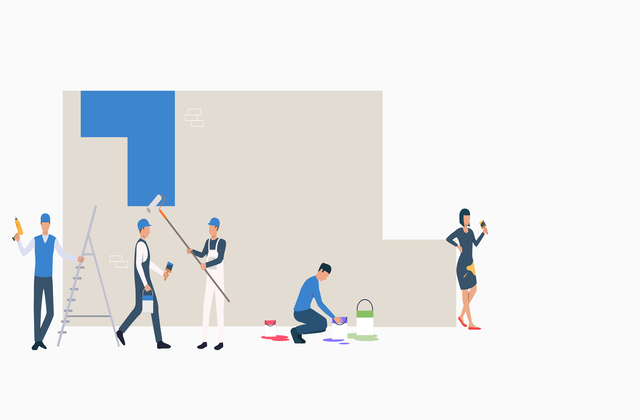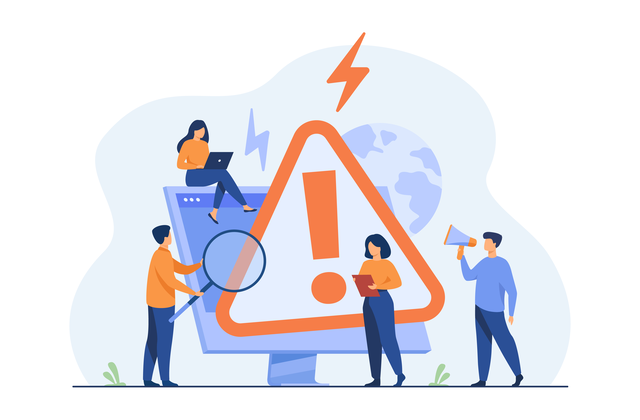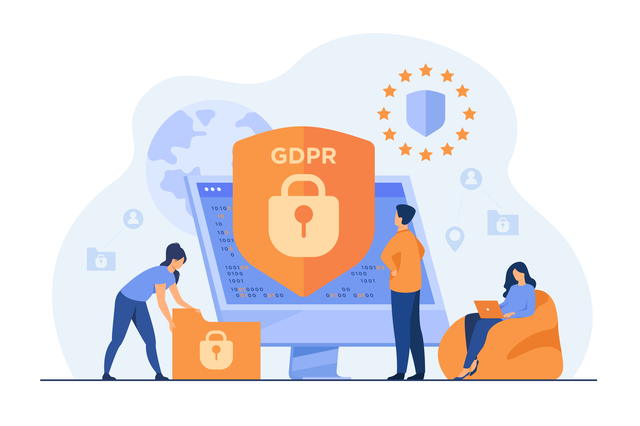Your legacy software is causing bottlenecks, stalling projects, and shrinking your output. The dated systems won’t scale, stay vulnerable, and ultimately affect your ability to serve customers. According to a Flexera report, most products have a five-year lifecycle, after which these software assets show signs of performance degradation and require an immediate upgrade.
Software modernization allows you to extract maximum value from your critical applications. Despite the resistance to change and upfront investment costs, a true digital transformation will give a competitive advantage and ensure higher monetary returns in the long run. It’s time to re-engineer your inefficient and slow systems. Are legacy systems holding you back? If yes, then keep reading.
What is legacy software modernization?

Legacy software modernization is the continuous process of upgrading and updating the dated IT environment of your business. When the current systems hold you back, create friction, and hit a tipping point – they require immediate replacements. Modernization involves transforming the vulnerable existing systems into modern cutting-edge solutions that will empower your business to do more and deliver better.
The challenging state of your monolithic software ecosystem warrants a digital transformation. If the present applications are not meeting business value, fit, and agility and can’t cope with your daily demands and requirements, it’s time for an overhaul. The aging and risky applications will create performance issues and system failures.
It’s up to organizations to recycle and refresh this out-of-date software on time. IT decision-makers could run checks and perform a series of tests to check for any depreciation in performance, flexibility, and security. Persistent red flags indicate a dated system that needs to go, and organizations can’t afford to waste resources, time, and money on fixing them over and over.
Why you can’t continue using legacy software – Top Reasons

1. Support and Maintenance:
Legacy software isn’t as easy to maintain. You won’t find many developers in the market willing to work on legacy systems. The lowered backend maintenance amplifies the pre-existing issues, making it difficult to sustain the system. Legacy software may be botchy and bloated, leading to time wastage in patching and updating old code bases.
Training developers on a legacy system isn’t worth it either. The entire training exercise could be time-consuming, tedious, and counterproductive. Additionally, reserving a portion of your IT budget to maintain and support legacy tech could be better utilized on sleek, fast, and cutting-edge solutions that accomplish much more in far less time.
2. User Experience and Performance:
Any software that isn’t updated will start to decay in performance. Users will experience constant lags and glitches, potentially affecting their experience. The inability to get a swift response to their actions will lead to frustrations, leading to efficiency issues, and lowered output. Suddenly, the whole interface won’t feel intuitive and user-friendly.
In the modern age, businesses expect superior performance. Erratic crashes and consistent downtime hinder work and don’t help you move at the desired pace, making it hard to meet your objectives and close your targets on time. And it’s not just about performance; legacy software will also have a backward interface and no community support, making it even harder to continue trusting it forever.
3. Security and vulnerability:
Legacy software is prone to hacks and cyber-attacks. If the security patches, firewall, and other safety measures are compromised, expect the subsequent intrusion to disrupt the entire system and take down the dependent assets. Any breach will shut down your business and prevent any work from happening.
The lack of updates leaves the software exposed. Any reliable software with its latest release will address all prevailing critical errors. Malicious actors in the absence of security measures can exploit vulnerabilities to take over administrator sessions and access customer information, which could affect the business’s reputation, lead to penalties, and invite lawsuits.
4. Compliance and regulations:

An older software won’t be as compliant with the current regulatory framework. Due to the lack of investment and support, the likelihood of the internal code base meeting the latest compliance standards is low. Any slip-up on your side can damage your reputation, judiciary costs, and penalties.
The shadow copies, backups, archival protocols, and other inherent measures are often dismal, leading to potential intrusion. A data-heavy solution storing or running a lot of sensitive information can potentially run into criminal lawsuits if the data gets leaked and misused. Beyond this, any changes on your part to secure this data would require excessive customization, leading to extra expenses.
5. Integration and Scalability:
Legacy systems can’t keep up with any advancements, and wanting to integrate with Artificial Intelligence (AI), Machine Learning (ML), Internet of Things (IoT), and interconnect with other tools will face stiff resistance. The inability to transmit and share data across applications will plague your internal activities.
Plus, needing specific modules and APIs to exchange data results in more time spent in wasteful activities. Your IT team focuses less on core tasks and more on managing a dying software that doesn’t provide optimal value. The lack of compatibility with emerging technology makes it difficult to connect with other channels and devices as seamlessly as you would hope.
6. Vendor backout and Documentation:
Vendors will retire their products after a while. Any software on its way out will likely receive less interest from the vendor. From announcing its cut-off date to promoting new versions, vendors try everything to get businesses onto the latest version. Once past the date, expect them to stop releasing security and service patches.
What’s worse, they even stop to provide support. Even an extended support package costs above and beyond their generic rates. The likelihood of finding official resources and consultants to manage your workload comes down, and the available ones charge higher than usual. Post this, they even stop updating software docs, shut down all partner networks, and terminate any add-on platforms.
How to modernize your legacy systems?
Complete an audit:
Assess the systems in place, review the code base, compare the technologies, analyze the architecture, try out the user interface (UI/UX), and test for performance to uncover any potential issues. Complete a systematic assessment to determine how you would like to proceed. This stage reveals whether you should refactor, re-platform, redesign, or rethink your legacy solution.
Document your requirements:
Maintain a value-driven checklist that details and benchmarks every little aspect, ensuring you get expected returns if and when you decide to re-engineer your solution. The internal standards for all the processes serve as a guide for developers and testers to establish whether the new system aligns with their business demands at peak times.
Select an Approach:
Do you wish to refactor, rebuild, or replace? Ask yourself what makes more sense per the budget, resources, time, and effort. If you want to tweak the code, then opt for refactoring, with its manageable costs and risks. It only makes the code simpler and clearer.
You could also opt for a rebuild where you rewrite application components from the bottom-up but preserve their scope and specification. Else, replace the whole ecosystem, which would involve eliminating and substituting all the application components one at a time.
Create a Roadmap:

Put together a value-based drilled-down roadmap that lists all the key milestones you wish to implement in a multi-phased manner as part of the project from the current state to the end state. Also, select the right technology and tools to support your modernization process. Furthermore, make sure the roadmap syncs with the availability of team members.
Don’t forget to review and validate the core business goals with the planned roadmap and assign leaders/resources to oversee every facet of the execution. Creating a roadmap even lets you develop high-level cost estimates for different stages. Whatever you do, keep it flexible, have backups for possible risk-based scenarios, and keep everyone updated across the project cycle.
Deployment:
Now that you have established what you want, it’s time to execute your software modernization strategies. Make gradual modifications for faster testing and iterations with shorter release cycles and continuous improvement. Make sure to consider potential interdependencies and full-proof each phase with stringent testing before taking it to live.
Wrapping Up
According to Markets and Markets, the global application modernization services market size is expected to grow from $11.4 billion in 2020 to $24.8 billion by 2025, at a CAGR of 16.8%. Why do you think that is the case? Pretty simple, the costs of maintaining and supporting legacy systems far outweigh the costs of replacing them with new-age solutions.
The new breed of agile, fast, and robust digital solutions brings a higher degree of resolve and flexibility – making them better equipped to handle the intensive challenges of the modern business landscape. Despite the benefits, legacy system modernization is complex and risky.
Not completing a comprehensive evaluation could lead to pitfalls that only heighten the flaws and gaps in your legacy system. The experts at ISHIR handle every aspect of software modernization, from analyzing the solution, developing a strategy, and prioritizing features to rebuilding or replacing your product. Trust our professionals to provide you with the best upgrade on time and within budget.
The post Legacy System Modernization – 6 undeniable reasons why you need to upgrade it more than ever appeared first on ISHIR | Software Development India.



